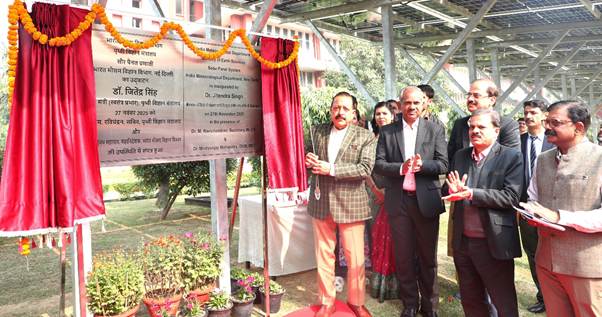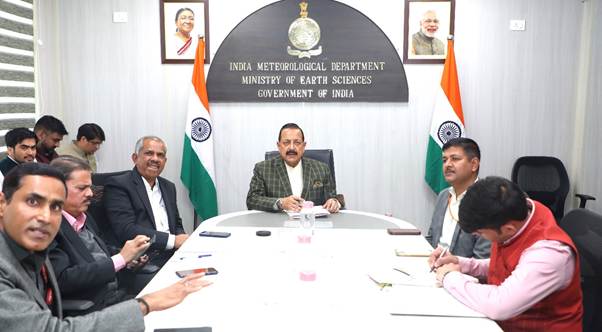The India Meteorological Department (IMD) is rapidly expanding its weather-monitoring infrastructure and is on track to triple its Doppler radar network from 47 to 126 by 2027, a commitment made to Prime Minister Narendra Modi, Union Science & Technology and Earth Sciences Minister Jitendra Singh said on Thursday.
Speaking at an event in New Delhi, Singh inaugurated three major IMD initiatives, including two indigenously developed C-Band Doppler Weather Radars in Raipur and Mangaluru, a 771 kWp solar power system at Mausam Bhawan, and a new Meteorological Museum designed to engage students and young learners.
Recalling the pledge made during IMD’s 150-year celebrations at Bharat Mandapam on January 14, Singh said: “We had committed to expand the radar count from 47 to almost three times by 2027, but I am happy to share that within just a few months, we have already reached 126 radars. We still have two years to go, and I am confident that we will not only meet but comfortably achieve the target well within the timeline.
The new Raipur radar, installed at Indira Gandhi Krishi Vishwavidyalaya, is Chhattisgarh’s first C-Band Doppler radar. The dual-polarised, solid-state system provides 250 km coverage and will significantly improve detection of monsoon depressions, heavy rainfall, thunderstorms, lightning, hailstorms, squalls and turbulence. It fills a longstanding observational gap across Chhattisgarh, interior Odisha, eastern Madhya Pradesh, southwest Jharkhand and southern east Uttar Pradesh.
The Mangaluru radar, installed at IMD’s RS/RW Office in Shakthi Nagar, is Karnataka’s first such system. Also offering 250 km range, it enhances monitoring of severe weather over the Arabian Sea, coastal Karnataka, north Kerala, Goa, south Maharashtra and northern Lakshadweep. Both systems are fully indigenised under the ‘Make in India’ initiative.
Singh also inaugurated a Meteorological Museum that documents IMD’s 150-year journey through historical instruments, communication tools, upper-air systems, radar and satellite components, and interactive audio-visual exhibits to attract students and weather enthusiasts.
Aligned with India’s clean-energy goals, a 771 kWp solar power system with 1,315 panels has been installed at Mausam Bhawan through NBCC. It supports the PM Surya Ghar Muft Bijli Yojana, contributes to India’s net-zero targets, and is expected to generate surplus power for the grid.
Mission Mausam review
Later, Singh chaired a high-level review of ‘Mission Mausam’, a flagship modernisation programme announced by PM Modi. He urged officials to accelerate procurement and installation, calling the mission “critical for strengthening early-warning systems, enhancing disaster preparedness, and delivering accurate, location-specific forecasts.”
He emphasised that each Doppler radar must be viewed as a regional asset, not merely a state-level facility, given the wide impact radius.
Ministry of Earth Sciences Secretary Dr. M. Ravichandran said IMD has now achieved over 50 percent radar coverage and will expand further with urban radars in Delhi, Chennai, Mumbai and Kolkata and advanced phased-array radars for Jammu & Kashmir, Himachal Pradesh and Uttarakhand to strengthen Himalayan weather surveillance
He said these additions will further improve nowcasting, short-range forecasting and disaster-risk reduction across the country.











